America’s Most Unique Trailside Attractions
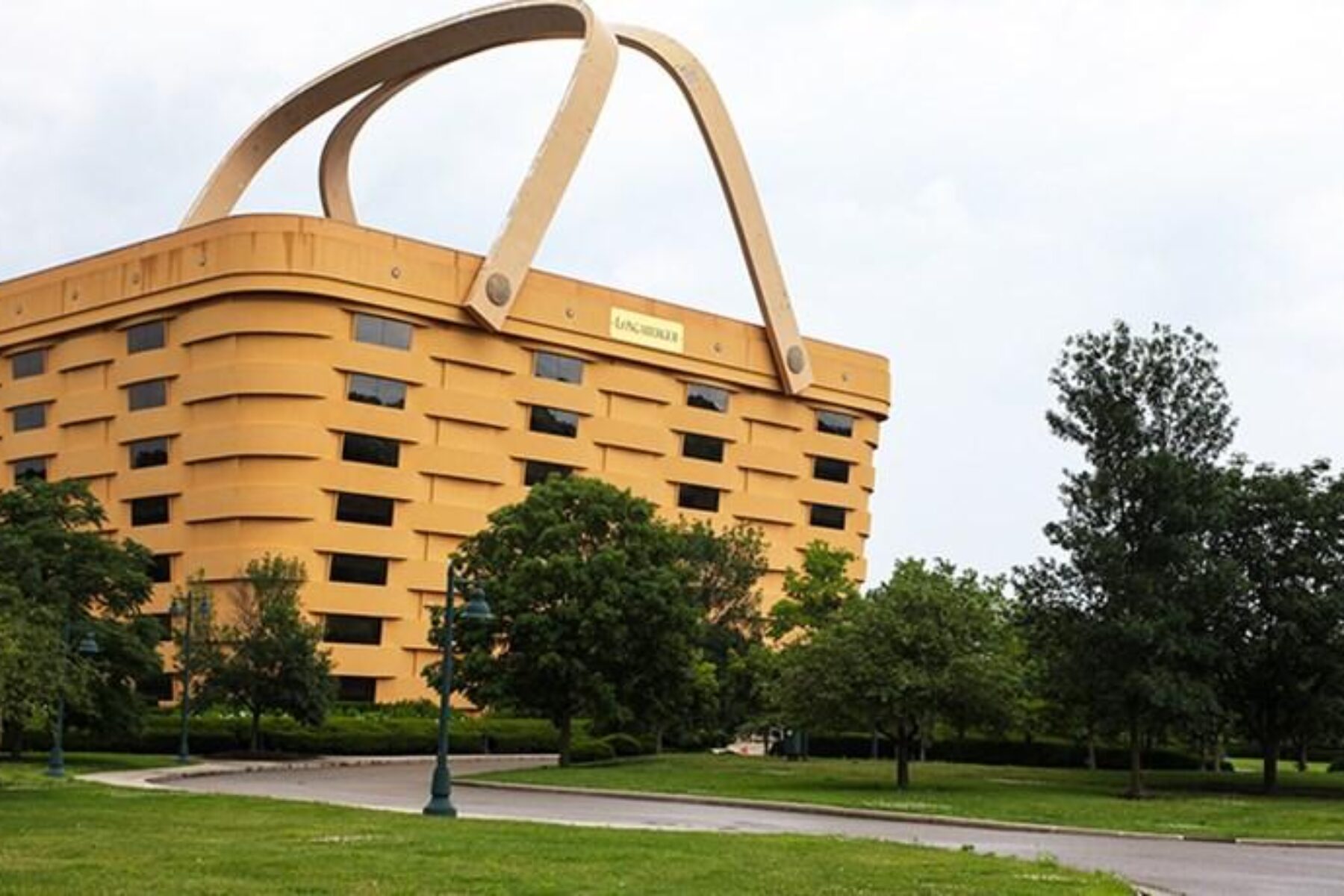
For years, we’ve been hearing about those strange and extraordinary attractions that have made for classic road trips across the country. But what about trailside? Connecting some of the most diverse communities, landmarks and geography in America, trails are the perfect places to find the inspiring, the unique and—in some cases—the truly bizarre.
In that spirit, here’s our developing list of (currently) 28 of the most unique trailside attractions in America. Fun fact: Many of the trails featured fall within the footprint of two Rails-to-Trails Conservancy signature projects, including the Great American Rail-Trail™, a 3,700-mile cross-country trail connecting Washington, D.C., and Washington State, and TrailNation™, a portfolio of eight developing trail networks around the country.
We’ll be doing updates in the future—so let us know what we missed! Speaking of which, we may not have a giant rubber band ball … but we do have Rocky! Enjoy.
Equine Gargoyles – Indian Bend Wash Path (Arizona)
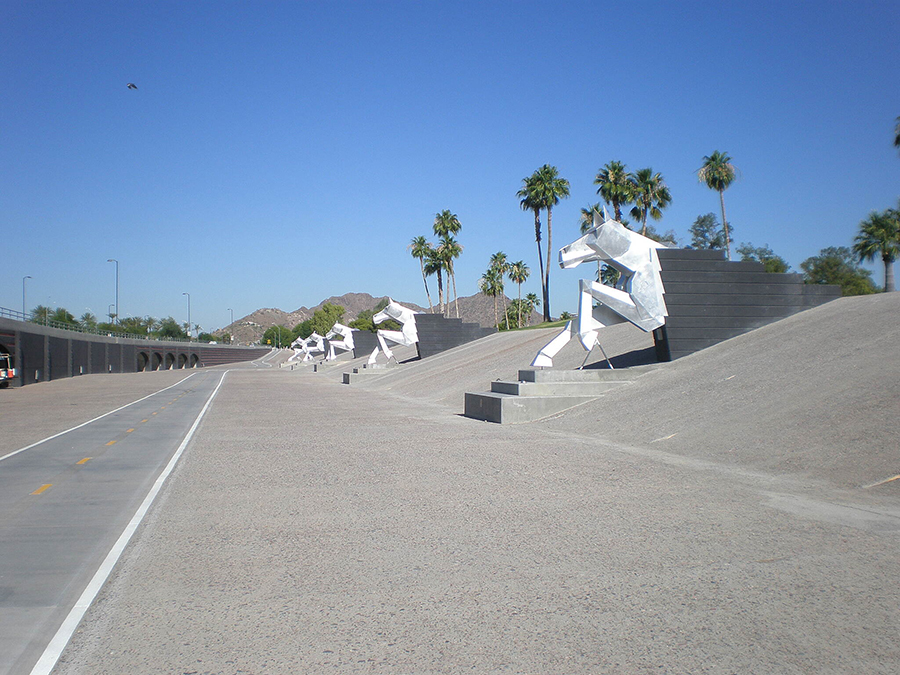
Along the 11.8-mile Indian Bend Wash Path in Scottsdale, Arizona, you’ll find “Water Mark,” a series of 14-foot-high equine gargoyles by artists Laura Haddad and Tom Drugan that invoke the McCormick Arabian Ranch that once existed adjacent to the site. During flash flooding, water emits from the mouths of the sculptures!
Cupid’s Span – Embarcadero Bike Path/San Francisco Bay Trail (California)
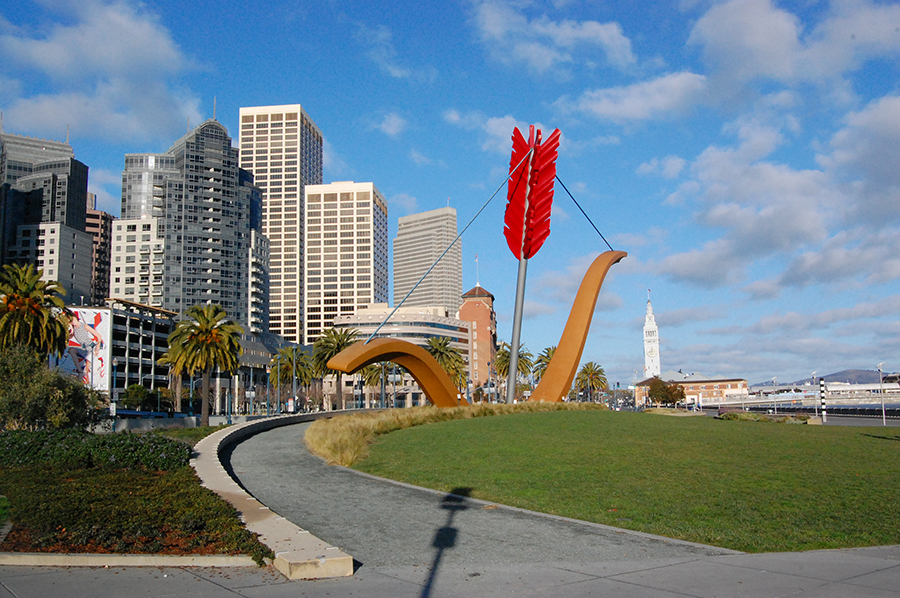
At San Franciso’s Rincon Park (Embarcadero and Folsom Sts.), tucked along the Embarcadero Bike Path/San Francisco Bay Trail, you’ll find this gigantic Cupid’s bow and arrow by Claes Oldenburg and Coosje van Bruggen, inspired by the city’s reputation as the “home port of Eros.”
Lupe the Mammoth – Guadalupe River Trail (California)
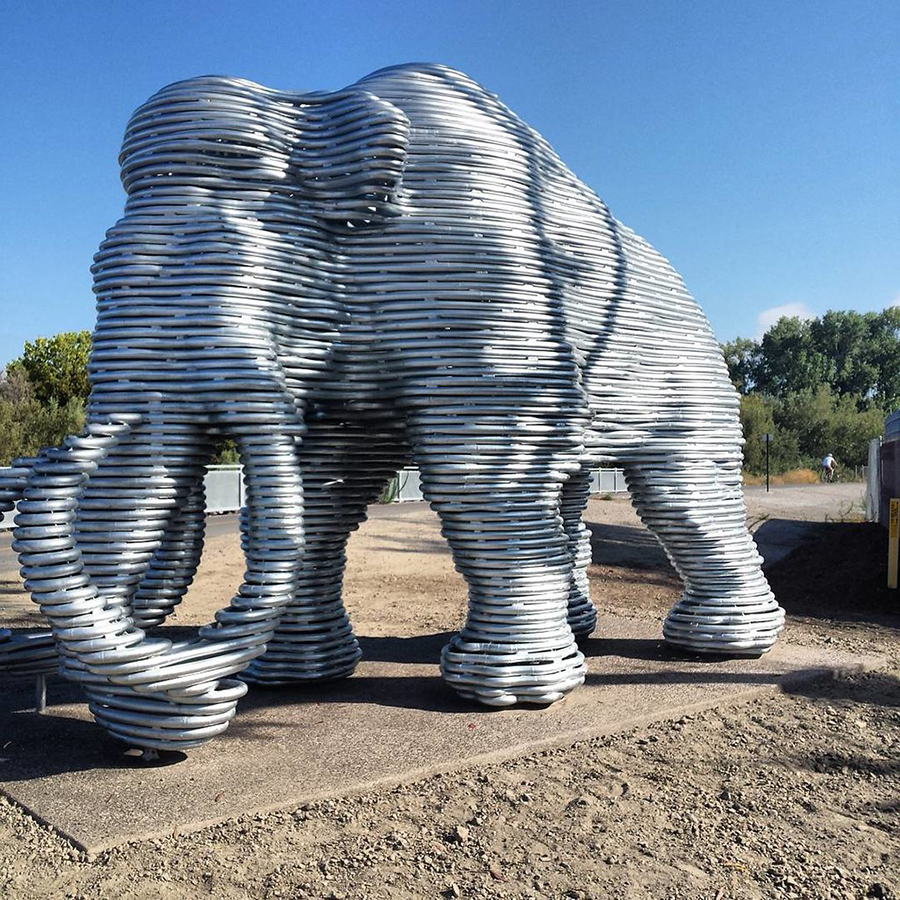
This 12.5-foot-high sculpture—located at the Trimble Road Trailhead of the Guadalupe River Trail in San Jose, California—commemorates “Lupe” the Mammoth, a real mammoth (an 8-foot juvenile) whose remains were discovered by a resident along the river in 2005. It was created by Greenmeme artists Freyja Bardell and Brian Howe.
Bigfoot Sighting? – Mineral Belt Trail (Colorado)
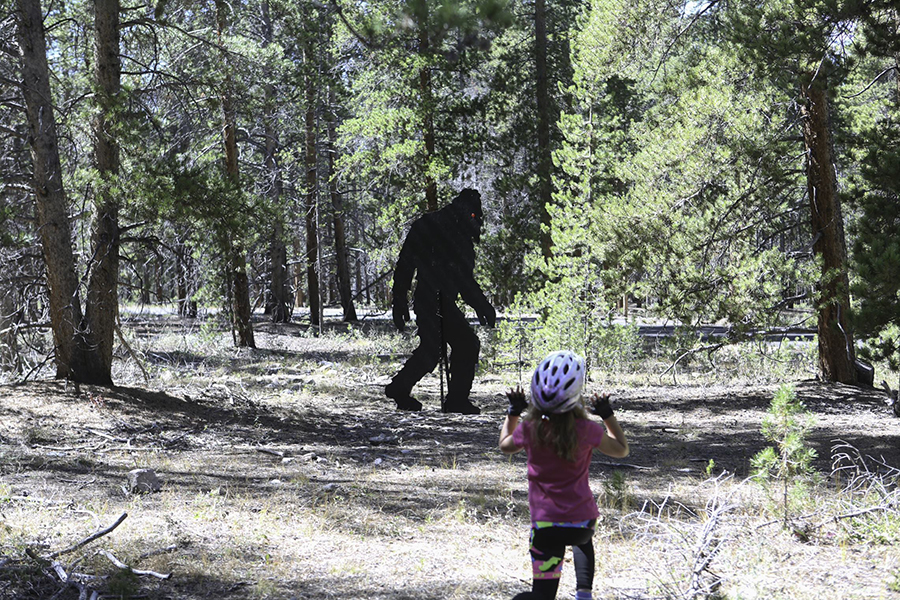
Even if you don’t believe in Bigfoot, you still might see him along the 11.6-mile Mineral Belt Trail in Colorado, at mile markers 3 and 9, where he peeps out of the trees at trail users. Of course, they’re just cutouts (origin unknown), but one might assume Bigfoot (with his big feet and gait) would appreciate rail-trails.
Viking Ship – Illinois Prairie Path (Illinois)
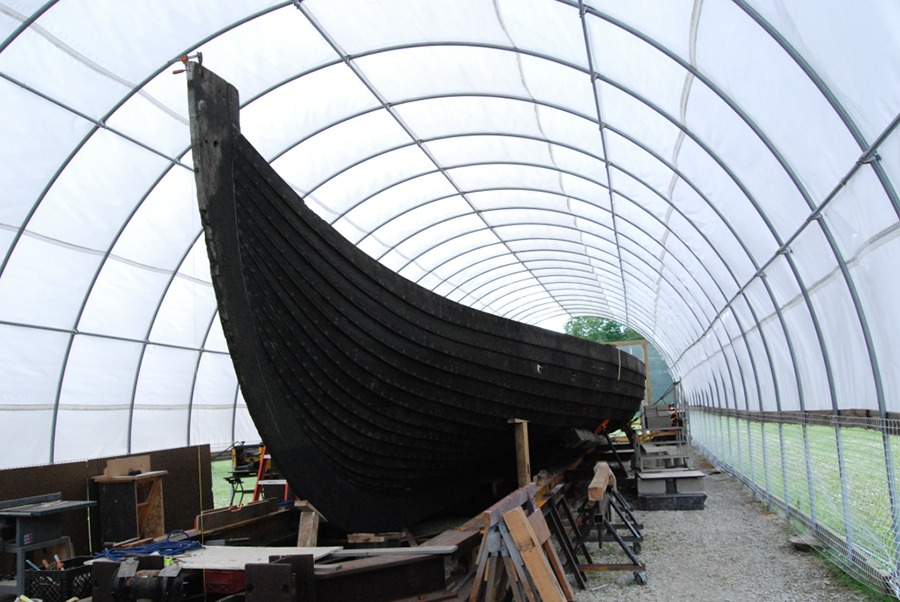
On the 58-mile Illinois Prairie Path, one of the oldest rail-trails in the country, you’ll find another old attraction in the form of this Viking ship. Housed at Good Templar Park in Geneva, Illinois, the 76.5-foot-long structure was built for the 1893 World’s Fair as a duplicate of an ancient ship discovered in 1880 in Gokstad, Norway.
Jazz Walk of Fame – Cardinal Greenway (Indiana)
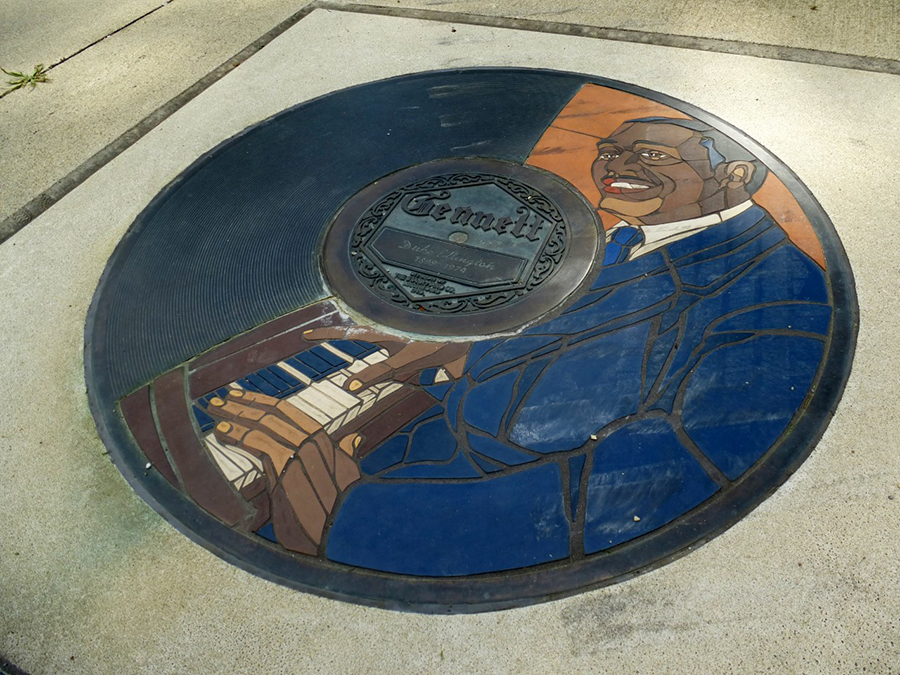
In Richmond, Indiana, at the southern end of the 62-mile Cardinal Greenway at Whitewater Valley Gorge Park, the Gennett Records Walk of Fame honors 35 jazz legends—such as Duke Ellington, Artie Shaw and Alberta Hunter—with stunning bronze medallions resembling 78 rpm records and featuring their images and achievements.
RELATED: 16 HISTORIC HIGHLIGHTS ALONG THE GREAT AMERICAN RAIL-TRAIL
College Bound Garfield – Sweetser Switch Trail (Indiana)
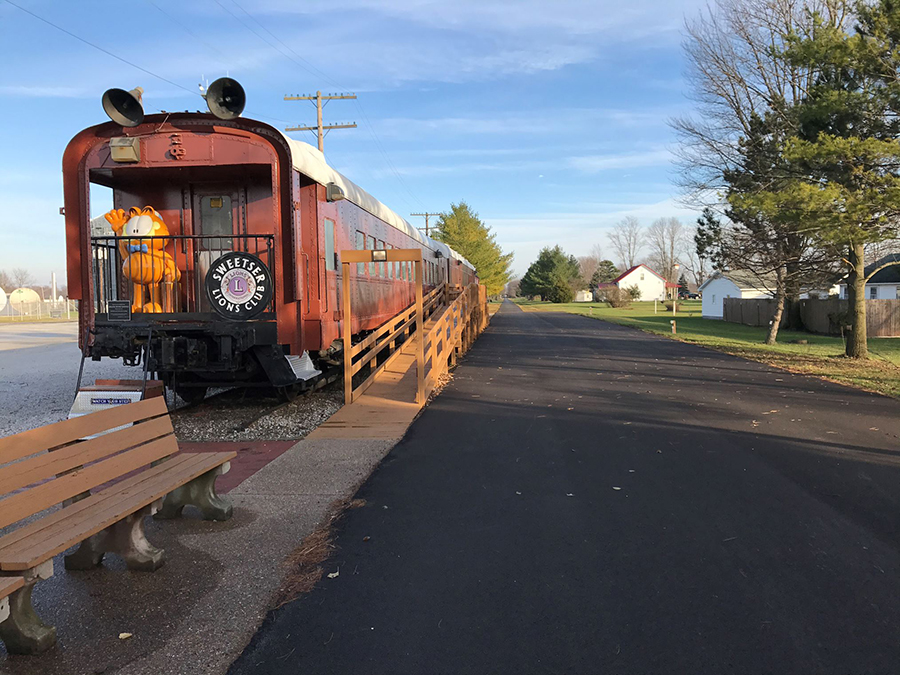
Statues scatter Grant County, Indiana, to honor the world’s most famous orange (technically red) tabby, Garfield, and his cartoonist creator, area native Jim Davis—including this one on the 4-mile Sweetser Switch Trail (Main Street trailhead). Situated at two restored railcars and a caboose, “College Bound” Garfield waves hi (or goodbye?) to passersby.
Albert: The World’s Largest Bull – T-Bone Trail (Iowa)
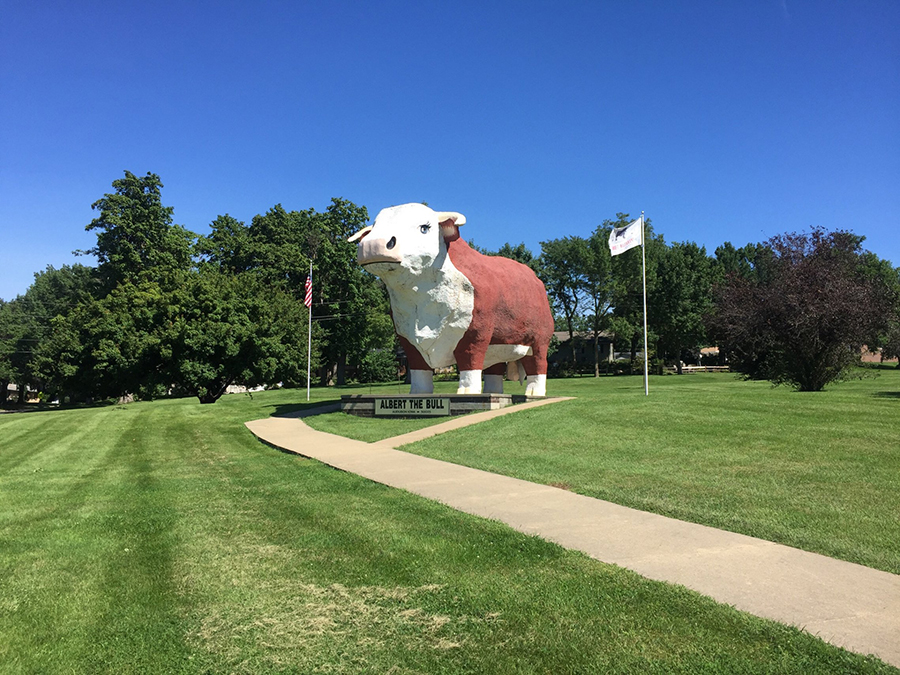
According to RoadsideAmerica.com, Albert, the World’s Largest Bull, has been watching over Audubon, Iowa, since 1964. Located along the 19.6-mile T-Bone Trail (East Division St. and Stadium Dr.), Albert is 28 feet tall, and spans 15 feet between his horns (and is ridiculously adorable, we think).
World’s Largest Wooden Nickel – Iowa River Corridor Trail (Iowa)
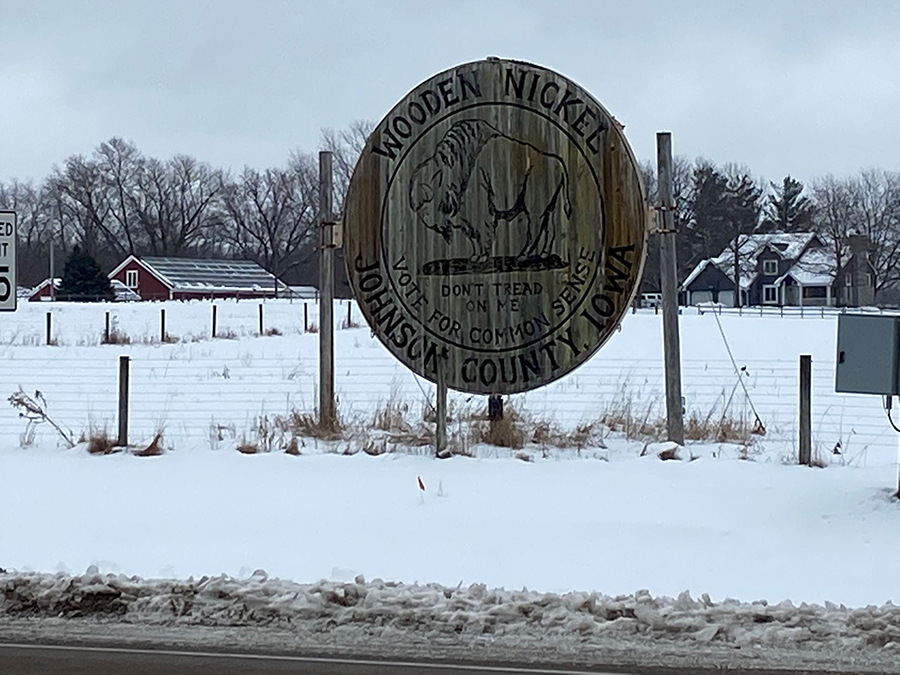
Along the Iowa River Corridor Trail in Iowa City (near Dubuque St. NE and E. Oakdale Blvd.) is the World’s Largest Wooden Nickel, created in 2006 by Jim Glasgow (and designed by cartoonist David Morice). For the title, the 16-foot nickel supplanted its predecessor, a 13-footer located at the Historical Nickel Museum in San Antonio.
Mammoth Cave Railroad Bike & Hike Trail (Kentucky)
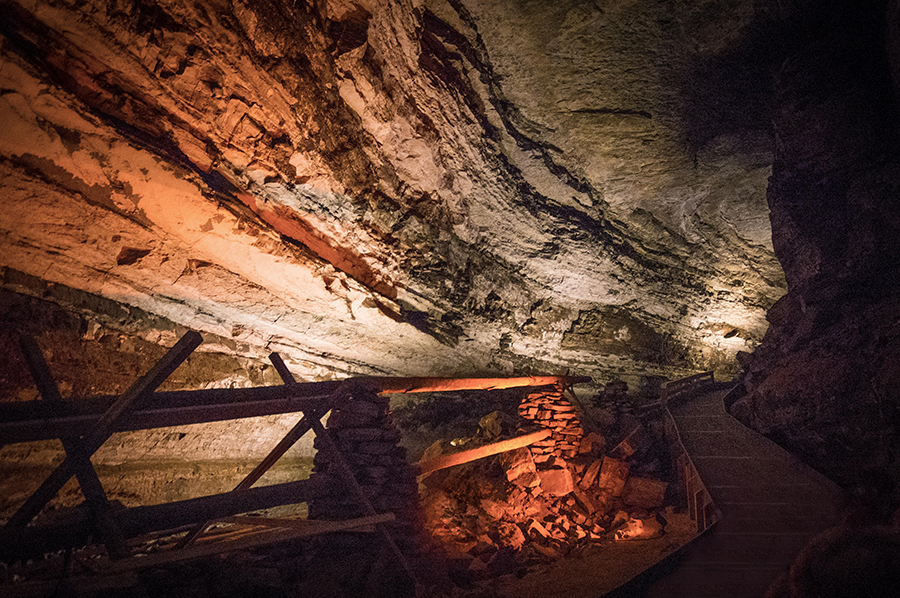
At the northern end of the Mammoth Cave Railroad Bike & Hike Trail is impressive Mammoth Cave, the world’s longest cave with 390 miles of passages. Fun fact: It is named for its massive size and not woolly mammoth fossils, which have not been found there.
Historic Flood Lines – C&O Canal Towpath (Maryland)
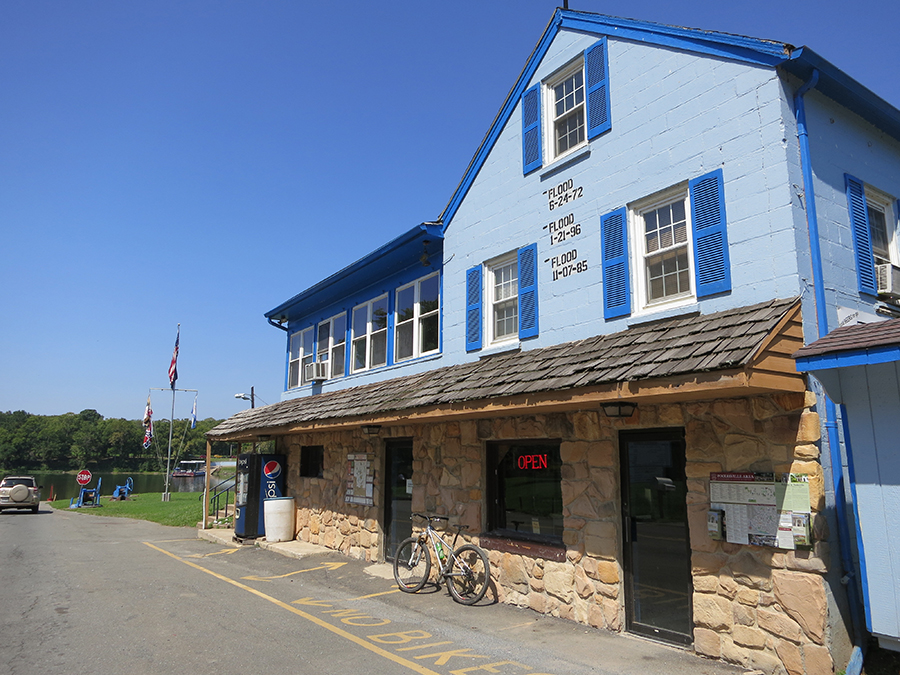
Whites Ferry—along the 184.5-mile C&O Canal Towpath in Dickerson, Maryland—provides a crossing along the Potomac River for cars, bicycles and people. On the Store & Grill building (open Fri. to Mon.—we hear the food’s great!), line markers designate three historic floods that devastated the area in 1972 (Hurricane Agnes), 1985 (Election Day Floods) and 1996.
Beautiful Connection – Bridge of Flowers (Massachusetts)
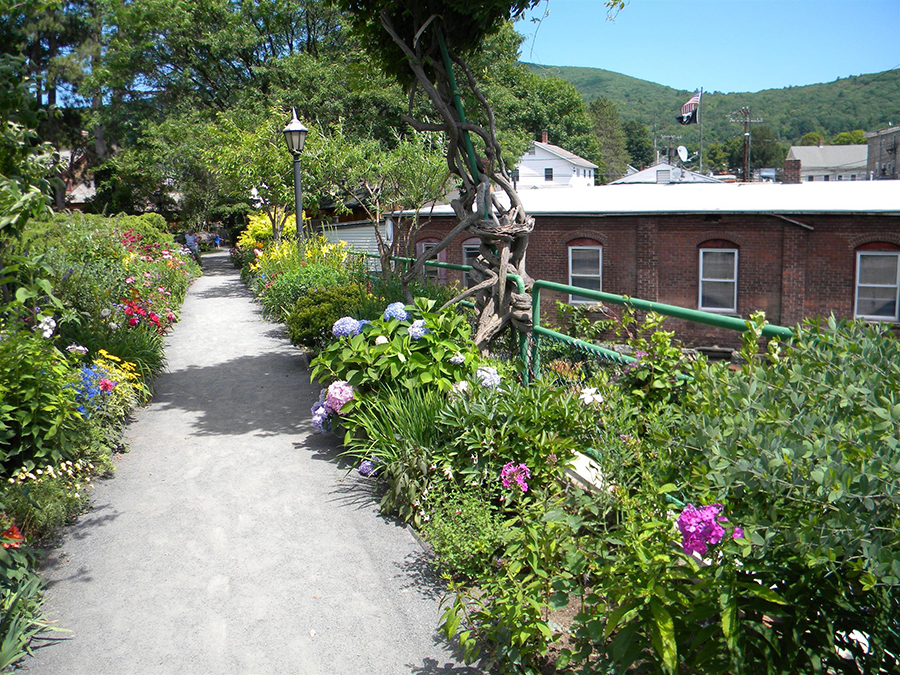
Just a tenth of a mile in length, the beautiful Bridge of Flowers, a pedestrian walkway built on an old trolley bridge over the Deerfield River, connects two communities in northwestern Massachusetts: Shelburne Falls and Buckland. The 400-foot bridge springs to fragrant life every year from April to October.
Our Lady of the Rockies – Milwaukee Road Rail-Trail (Montana)
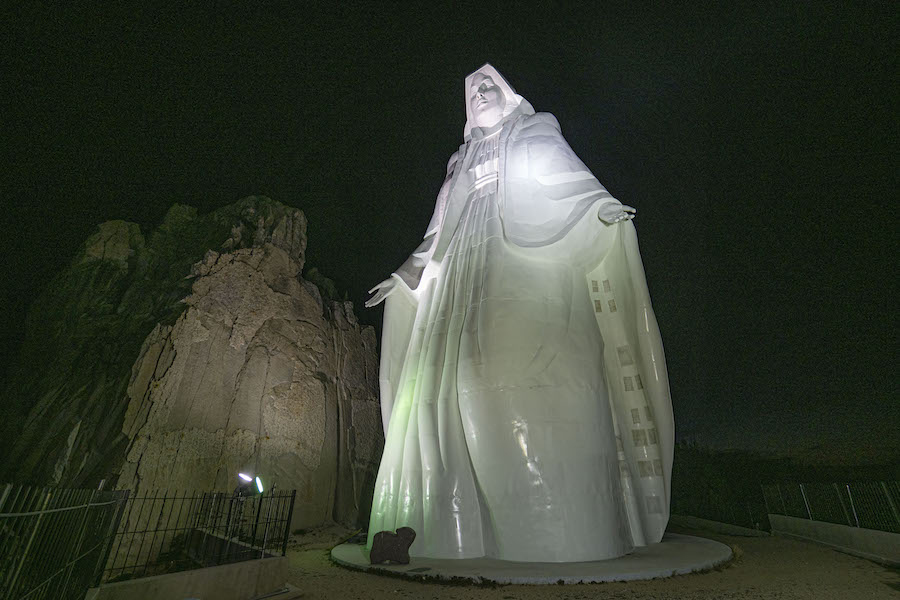
This 90-foot statue, made in a likeness of Mary, Mother of Jesus, watches over Butte, Montana, and is accessible from the Continental Divide National Scenic Trail. At Pipestone Pass, that trail converges with the 4.5-mile Milwaukee Road Rail-Trail traversing Thompson Park. Completed in 1985, the statue is dedicated “to women everywhere, especially mothers.”
RELATED: TRAIL OF THE MONTH: MONTANA’s MILWAUKEE ROAD RAIL-TRAIL (Thompson Park)
Pollyanna Gateway – Littleton Riverwalk (New Hampshire)
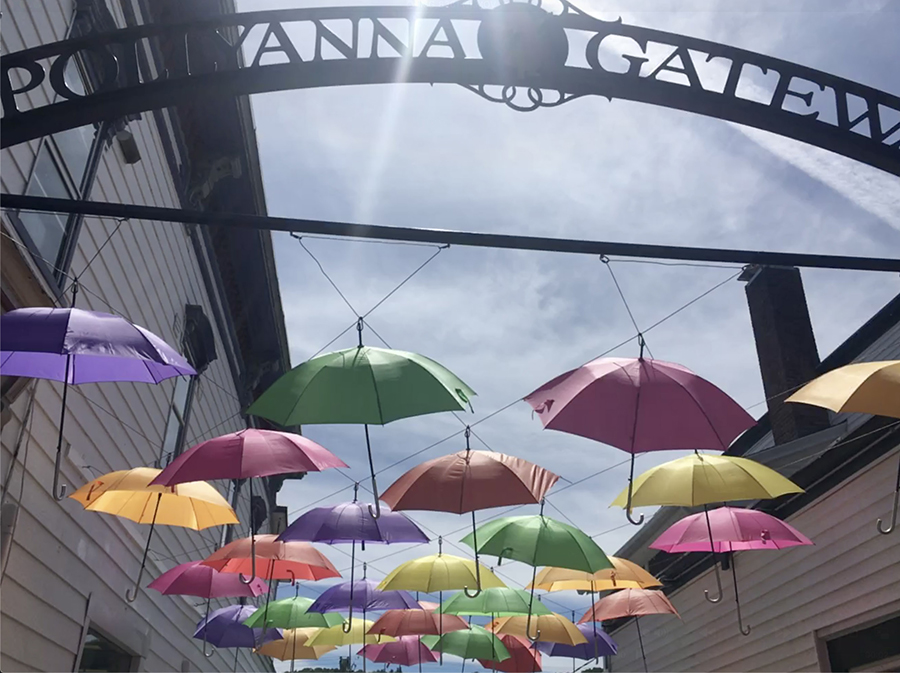
Around Littleton, New Hampshire, it’s clear how much the town has embraced their hometown author, Eleanor H. Porter, who created “Pollyanna”—one of literature’s most optimistic characters—in 1913. This is particularly evident along the Littleton Riverwalk, which features this colorful “Pollyanna Trailhead.”
Gnome Homes – Columbia Trail (New Jersey)
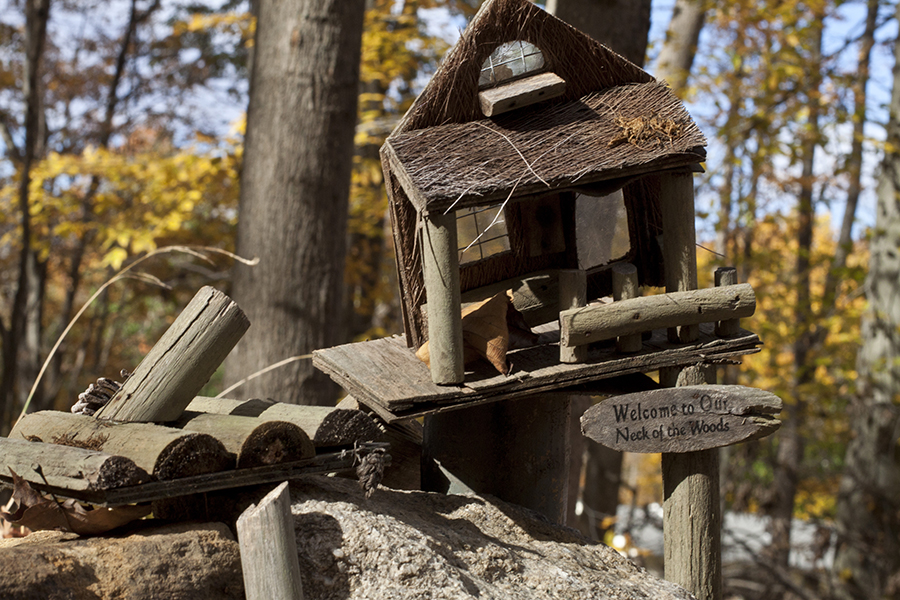
The magic of nature is alive on New Jersey’s 15-mile Columbia Trail, which—in addition to stunning backdrops—features some 40 to 100 gnome homes, created by locals. The first home was created to encourage a child to go for a walk, and trail managers have embraced them with the goal of helping children understand “the connectedness of all things.”
Glittering Glass Art at Ariel-Foundation Park – Heart of Ohio Trail (Ohio)
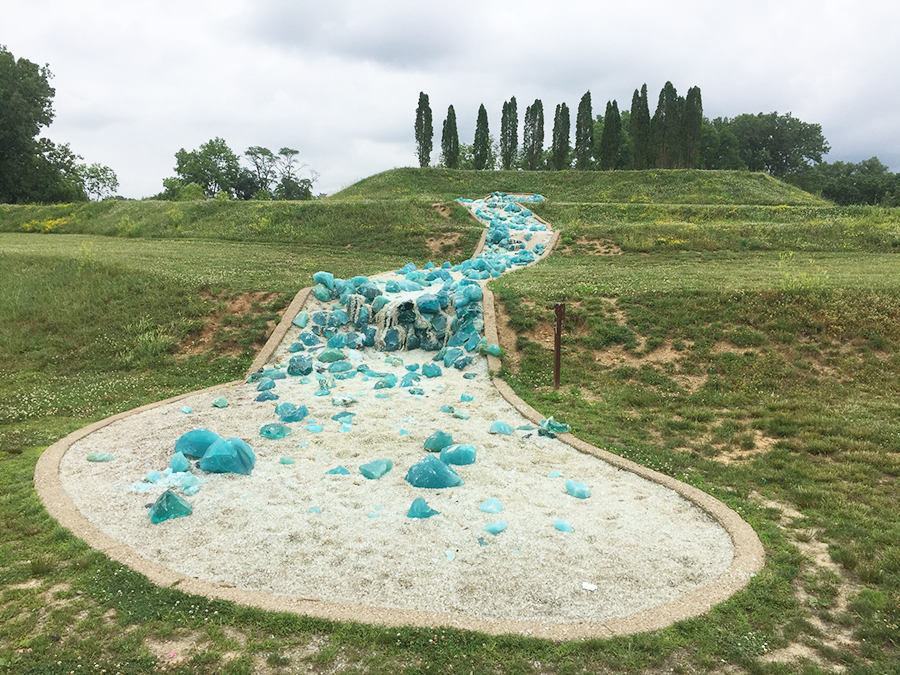
Along the 15.7-mile Heart of Ohio Trail (part of the 326-mile Ohio to Erie Trail) in Mount Vernon, Ariel-Foundation Park honors the industrial heritage of the area, and in particular the glassmaking families of PPG Industries via its unique “River of Glass” sculpture, which flows down a hillside and is fashioned with “cullet” and crushed glass.
RELATED: SEVEN WONDERS OF THE OHIO TO ERIE TRAIL
Longaberger Basket Headquarters – T.J. Evans Panhandle Trail (Ohio)
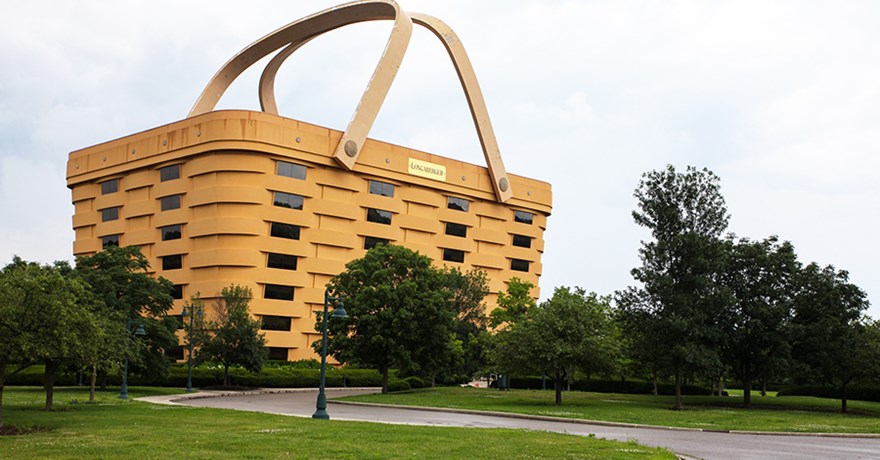
Along the 10-mile T.J. Evans Panhandle Trail in Newark, Ohio, sits this majestic former home of the Longaberger Company—a seven-story replica of the company’s best-selling and iconic Medium Market Basket. The “basket” ceased to be the company’s headquarters around 2016, and there are efforts under way to turn it into a luxury hotel.
Scioto Deer: Scioto Greenway Trail (Ohio)
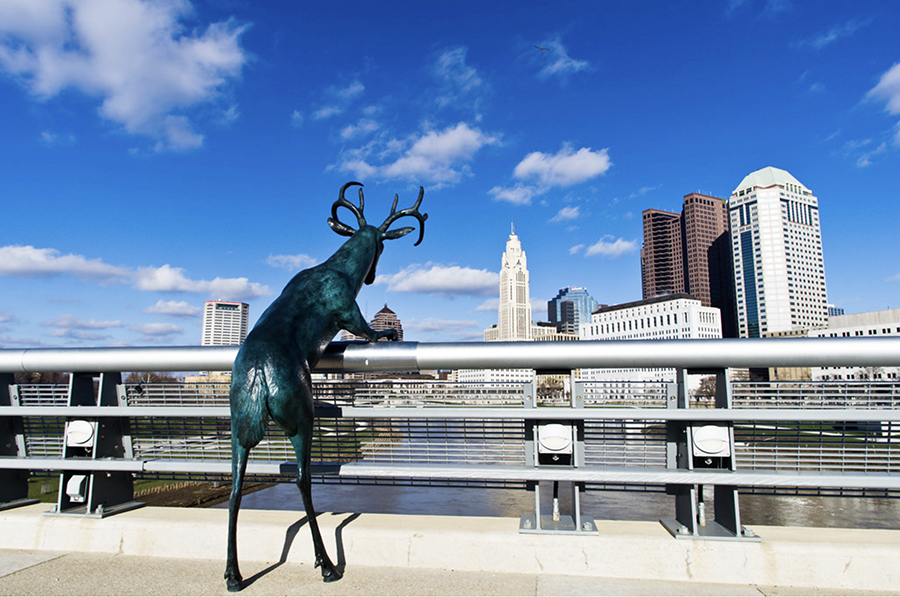
Three bronze deer by artist Terry Allen are found along Columbus, Ohio’s 12-mile Scioto Greenway Trail—sitting pensively at Genoa Park, lounging by the river, and watching over the city on the Rich Street Bridge. Why? The Scioto River was home to many Native American cultures; the word “Scioto” is derived from a Wynadot (Iroquois) word meaning “hairy deer.”
Going Global: Eco Earth Globe – Riverfront Trail (Oregon)
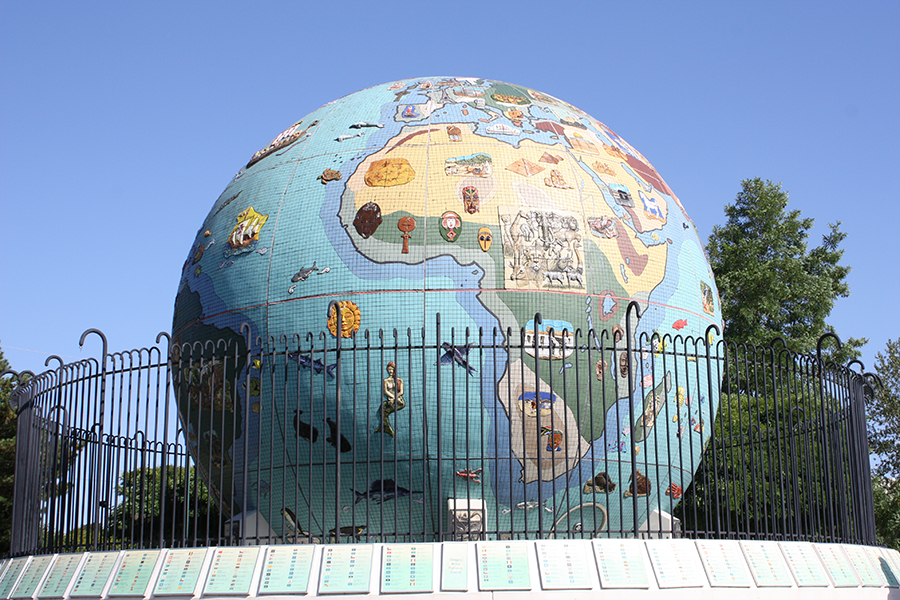
In Salem, Oregon, near the Riverfront Trail and the Peter Courtney Minto Island Bridge and Trail, is Riverfront Park—the home of Eco Earth Globe, an art installation created by a local geographer and artists in 2003. A plan is underway to restore the sculpture, which features the continents, regional wildlife and global culture.
World’s Smallest Park – Waterfront Bike Path (Oregon)
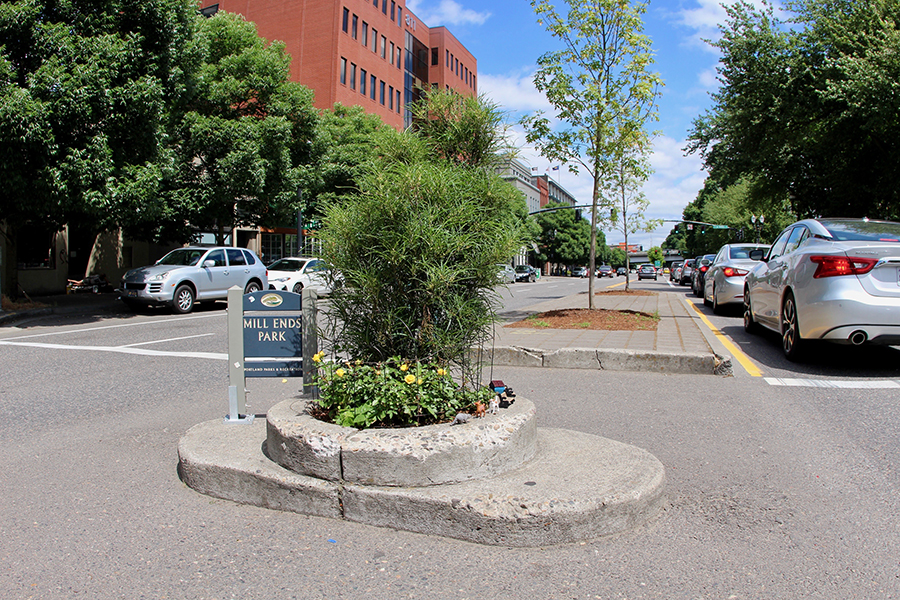
Big attractions are cool—but what about the smallest … like the World’s Smallest Park? That title goes to Mill Ends Park along Portland’s Waterfront Bike Path, which—at just 2 feet wide—exists in a median of (busy) Naito Parkway (at S.W. Taylor St.). “Created” by journalist Dick Fagan in 1946, it was dedicated in 1948.
Land Buoy – Delaware River Trail (Pennsylvania)
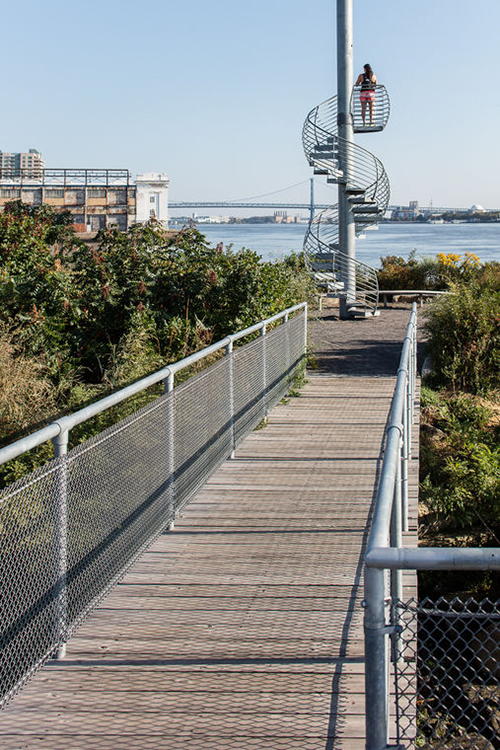
Located at the Washington Avenue Pier along the 2.1-mile Delaware River Trail in Philadelphia, “Land Buoy,” a 55-foot spire by artist Jody Pinto, emits a soft blue light and features a 16-foot staircase offering expansive views of the waterfront. The structure honors immigrants who arrived in America via “Philadelphia’s Ellis Island.”
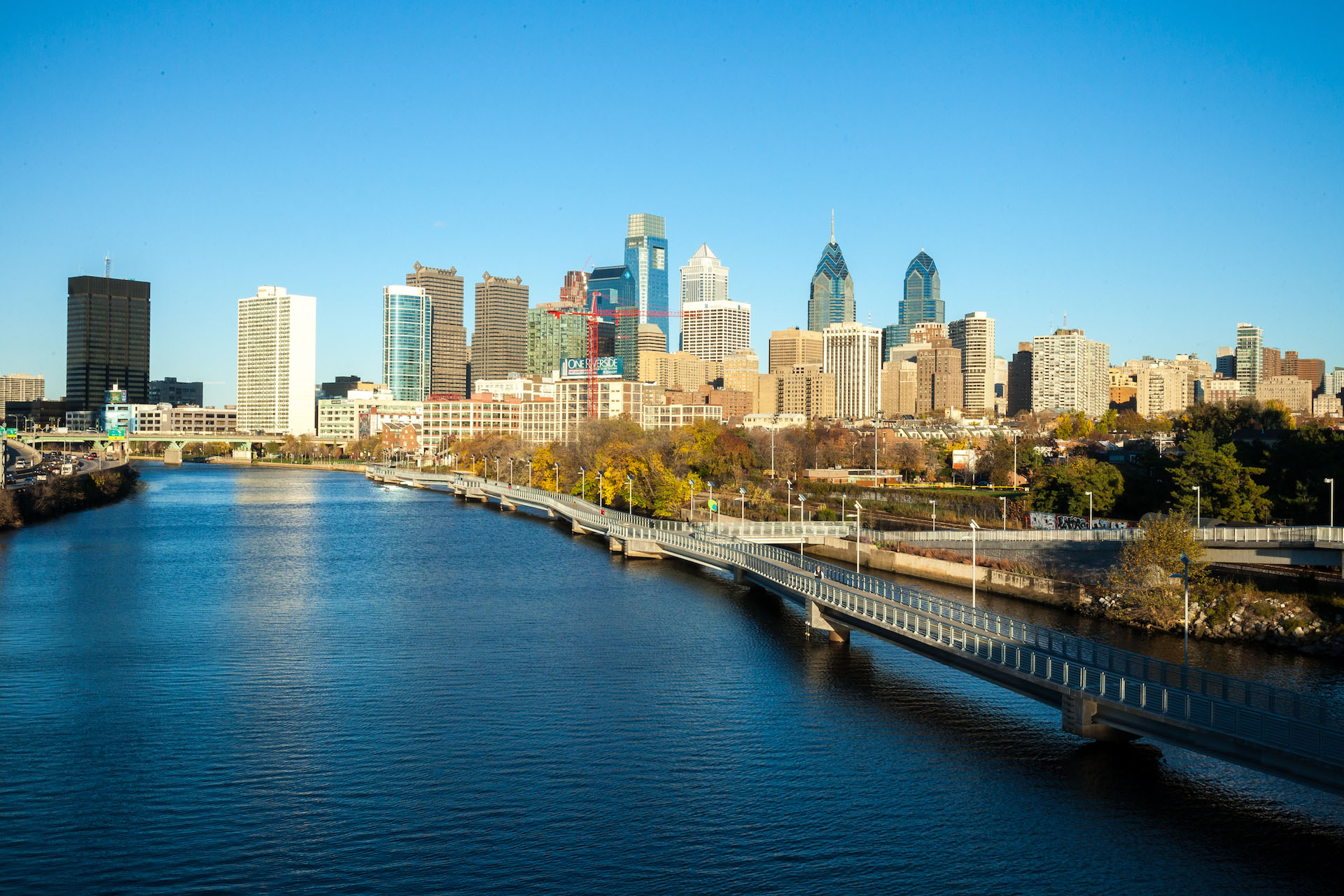
Monument to Cacique Mabodamaca – Túnel de Guajataca (Puerto Rico)
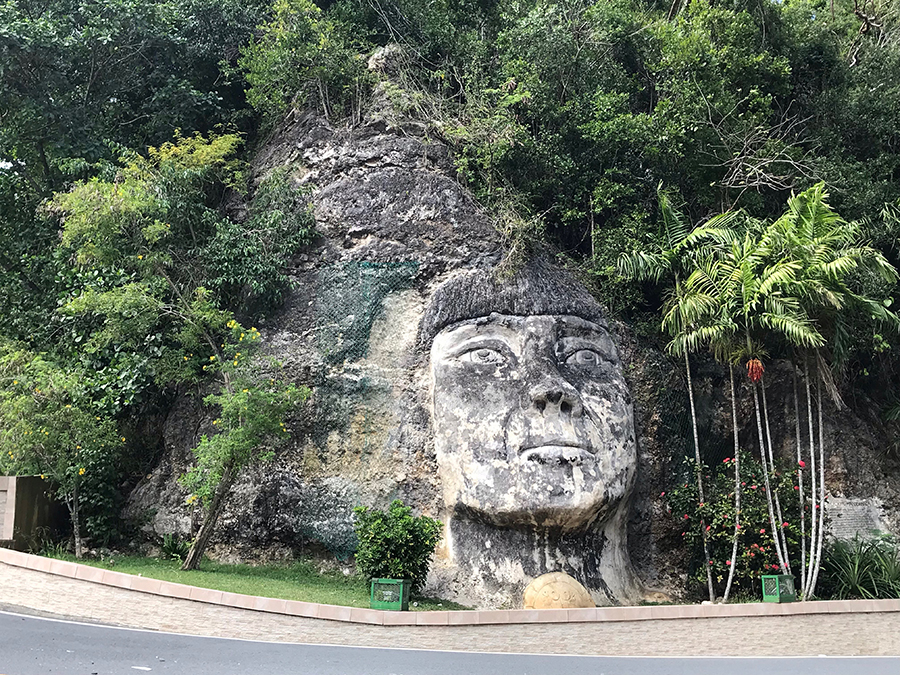
This giant sculpture is carved into a mountainside near Puerto Rico’s Túnel de Guajataca, a former railroad tunnel on a route that once transported sugarcane and passengers between San Juan and Ponce. The “Monument to Cacique Mabodamaca” honors the Taíno chief whose tribe existed in the region and went to war with Spanish invaders.
Cooper-Young Trestle (Tennessee)
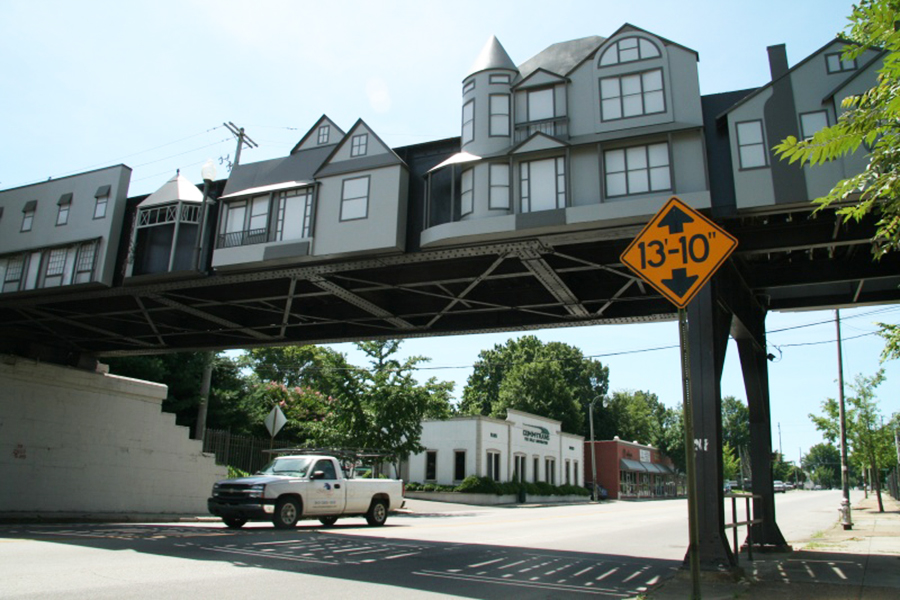
Though not a trail, this century-old former railroad bridge turned art installation + community gateway in Memphis’ Cooper Young neighborhood encapsulates its namesake—with 12 steel structures by artist Jill Turman Brogdon that are based on local buildings and homes. Dedicated in 2000, the installation was a project of the UrbanArt Commission.
Dandelion Fountain — Buffalo Bayou Trail (Texas)
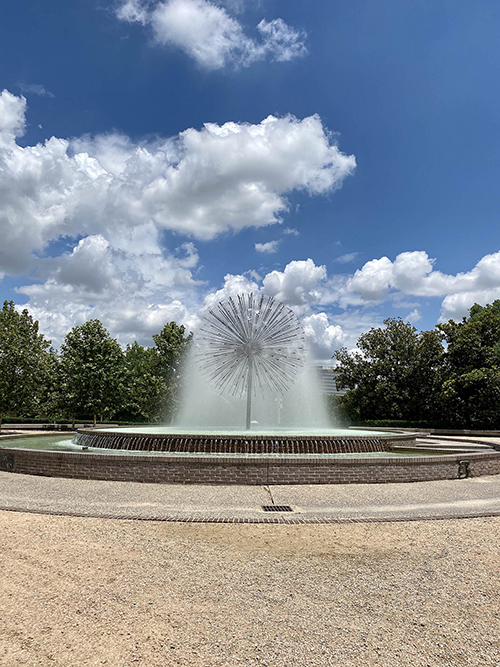
Donated to the City of Houston, Texas, by the Wortham Foundation and dating from 1978, the misty and magical Gus S. Wortham Memorial Foundation, created by William T. Cannady, was inspired by a similar fountain in Australia. The iconic bronze structure is located at Buffalo Bayou Park (Allen Parkway) along the 15-mile Buffalo Bayou Trail.
Chinese Arch – Golden Spike National Historical Park (Utah)
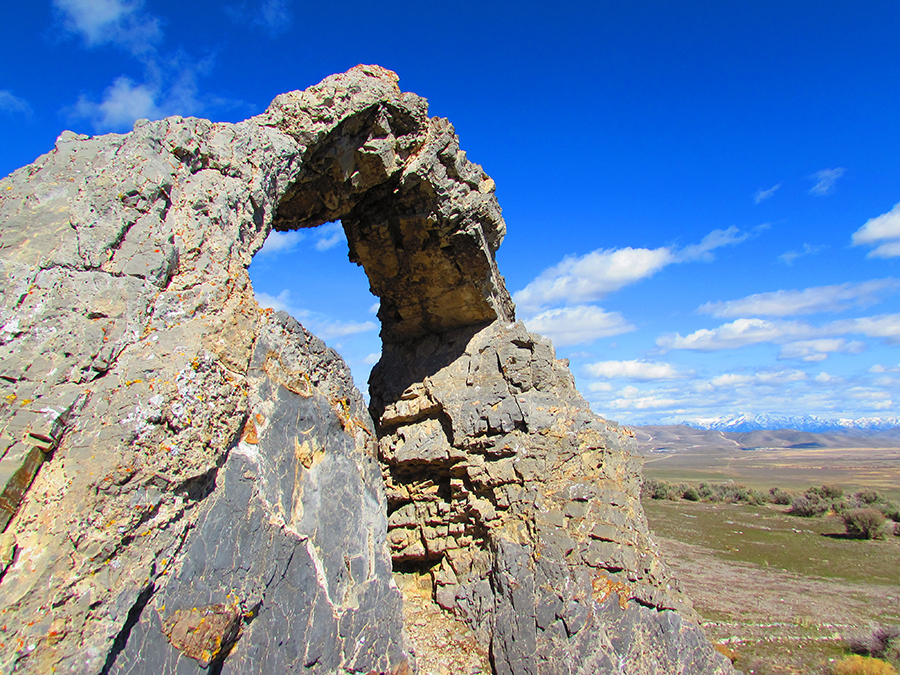
A natural wonder to behold, the Chinese Arch is accessible via a 4-mile out-and-back trek on a stretch of the original transcontinental railroad corridor (Golden Spike National Historical Park) in Utah. It honors the thousands of Chinese workers in the 1860s who, despite enduring harsh treatment and conditions, were vital contributors to the railroad’s completion.
Big Red Wagon – Spokane River Centennial State Park (Washington)
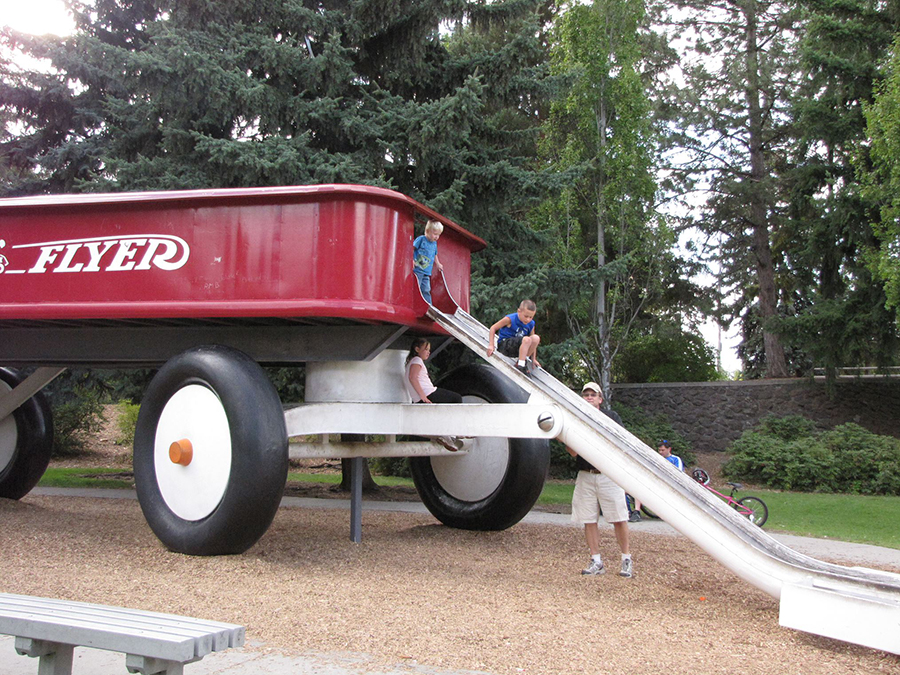
The nearly 40-mile Spokane River Centennial State Park Trail in Washington features the world’s largest Radio Flyer wagon, “The Childhood Express,” at Spokane’s Riverfront Park (W. Spokane Falls Blvd. and N. Stevens St.). Designed by artist Ken Spiering, and commissioned in 1989 by the Junior League, it weighs 26 tons.
Chew On It: Seattle Gun Wall – Elliott Bay Trail (Washington)
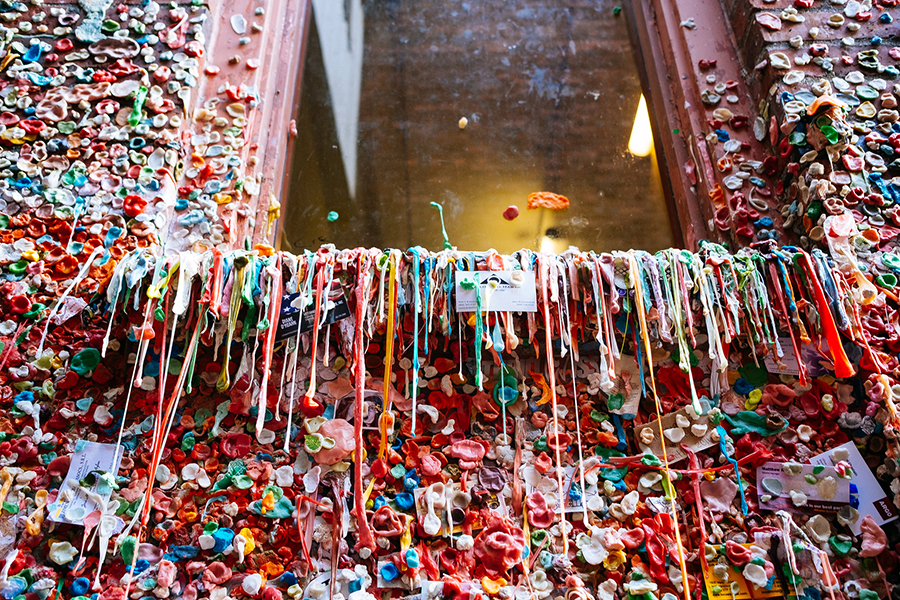
Certainly the least appetizing of the attractions featured, the Seattle Gum Wall, located near the Elliott Bay Trail and Pike Place Hillclimb Walk, is never-the-less a sight to behold—hosting some 250,000 pieces of chewed gum on a 54-foot stretch of alley near an improv theater and Pike Place Market.
Rocky Statue – MLK Drive Trail (Pennsylvania)
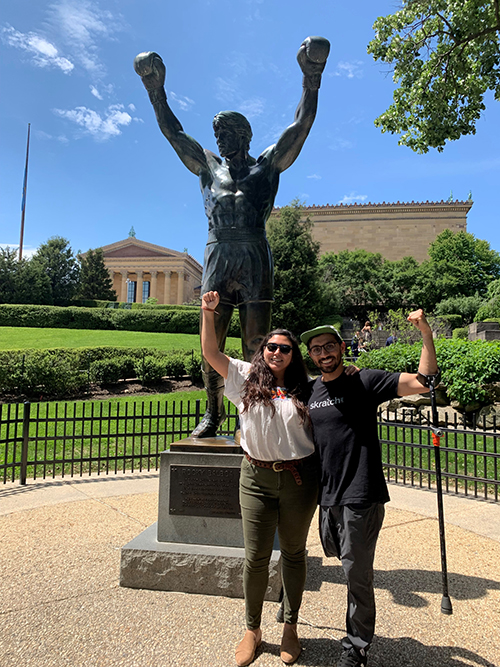
It’s one of the most memorable runs in cinematic history—when Rocky Balboa completes an epic 30-miles-plus route that ends atop the Philadelphia Art Museum steps in Rocky II. His world-famous statue—seen at that epic spot in Rocky III and IV—is now located at the bottom of the steps, at the start of the 4-mile MLK Drive Trail, arms raised in victory.
Acknowledgments: Special thank you to contributor Laura Stark. Additional acknowledgments go out to Brandi Horton, Suzanne Matyas, Ken Bryan, Laura Cohen, Ben Kaufmann, Kayla Walker, Kevin Belanger, Derek Strout, Jorge Brito, Eric Oberg and Anya Saretzky for their assistance in developing this list.
This article was originally published in the Green Issue of Rails to Trails magazine. It has been reposted here in an edited format.

Donate
Everyone deserves access to safe ways to walk, bike, and be active outdoors.
